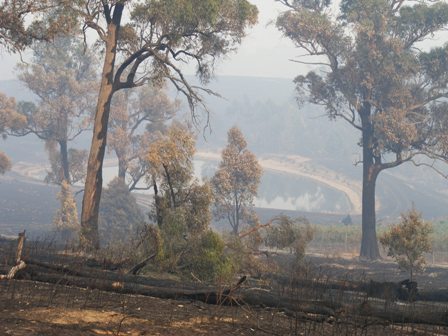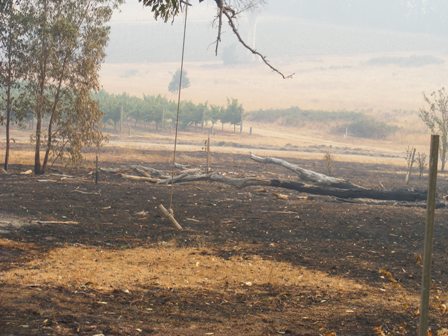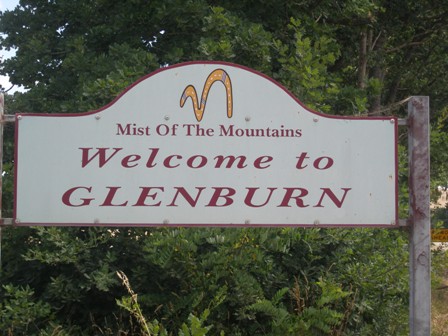The Douro wine region in Portugal is not only famous for its red and port wine production. There is also a place were a wonderful sparkling wine is produced. The picturesque town of Lamego, considered the birthplace of port wine, was the target of a Sunday afternoon drive last August along the upper Douro river. Lamego is well known for the only sparkling wine produced in this region. So off we went along the river through a wonderful summer’s landscape with blue sky and a very dry wind.

Park, church and stairs in Lamego, Portugal
We drove up from Peso da Régua at the Douro where we had lunch and which is about 12 km from Lamego. We returned the same way except that we did not follow the Douro river on our way back but we took the highway through the mountains which was faster.

A scenic spot with church in the city of Lamego
As with all places in Europe, their history has been shaped by many a people. Lamego has seen Roman masters and the Visigoths, it was battleground in the wars of the Moors and Christians. Historically Lamego is significant because it was here that the first king of Portugal, Alfonso Henriques, was declared king by noblemen in 1143. Today, Lamego has about 9000 residents in the city walls proper, and another 17,000 live in the surrounding villages and the countryside.

There is not only ham but also local cheeses
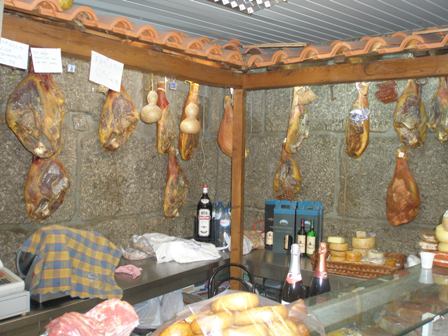
Local produce can be bought from small shops – can you see our bottles?

We dashed in one of these small local shops before the afternoon closure to buy two bottles of the legendary sparkling wine of Lamego. We grabbed the last two bottles available without consideration for brand nor price, jumped into the car and went straight home because of the advanced time.
Later at home at Quinta do Gatao we chilled the bottles and I took the photos below.

This is the first bottle
Our booty consisted of a dry red and a semi-dry white sparkling from Caves da Raposeira, located in Lamego. Both wines where very fruity. The red displayed red berry aromas, the white a more fruit salad type fragrance. We tasted them before we had dinner, just like that, as a apperitif so to say, just delicious at a hot summers day. Both wines come from Raposeira’s flagship brand called “Reserva”, their premium and super-premium segments are called “Super Reserva” and “Old Reserva” respectively. We will have to try those another time.

This is the second bottle.
Our dash to Lamego was just too short. We have to come back and explore the Caves in the town proper. The wines we had secured, were very much to our liking. It’s a pity that we do not know where to get them here in Bangkok.
Address:
Caves da Raposeira
Lugar da Raposeira
Apartado 9
5101-909 Lamego, Portugal
Te.: (351)-254655003
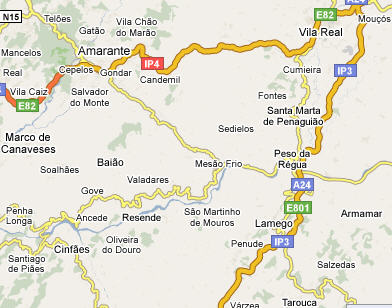
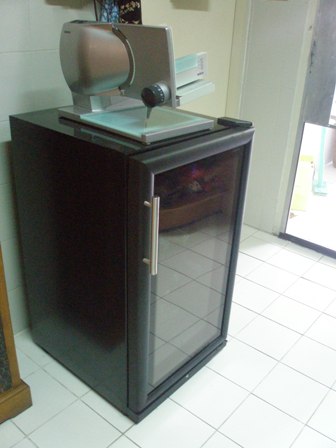




 Posted by themanfrommoselriver
Posted by themanfrommoselriver 


















